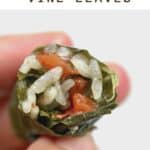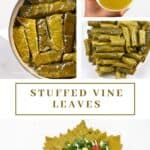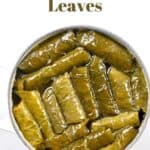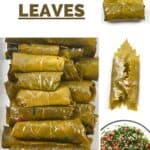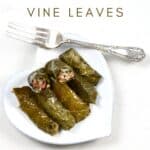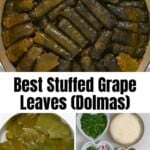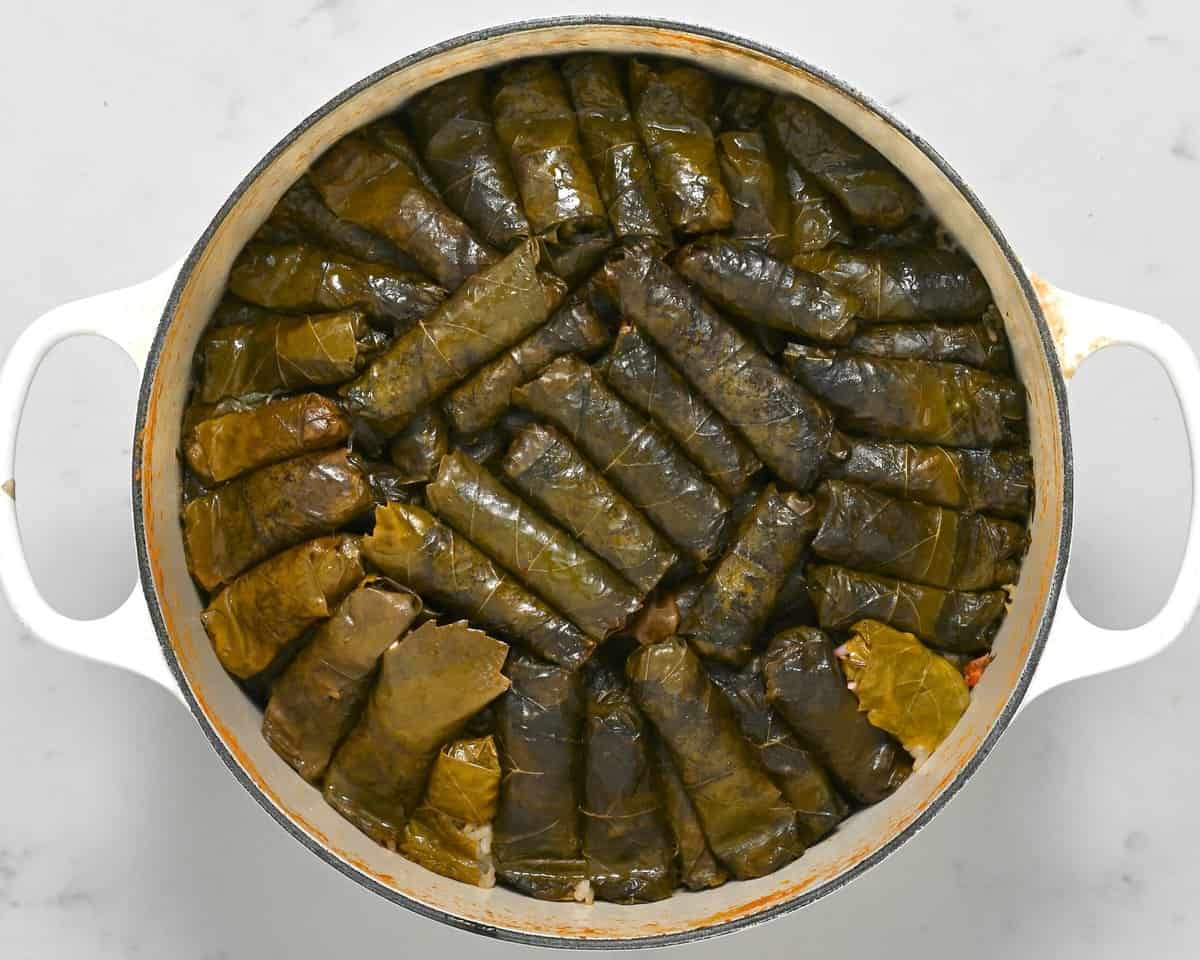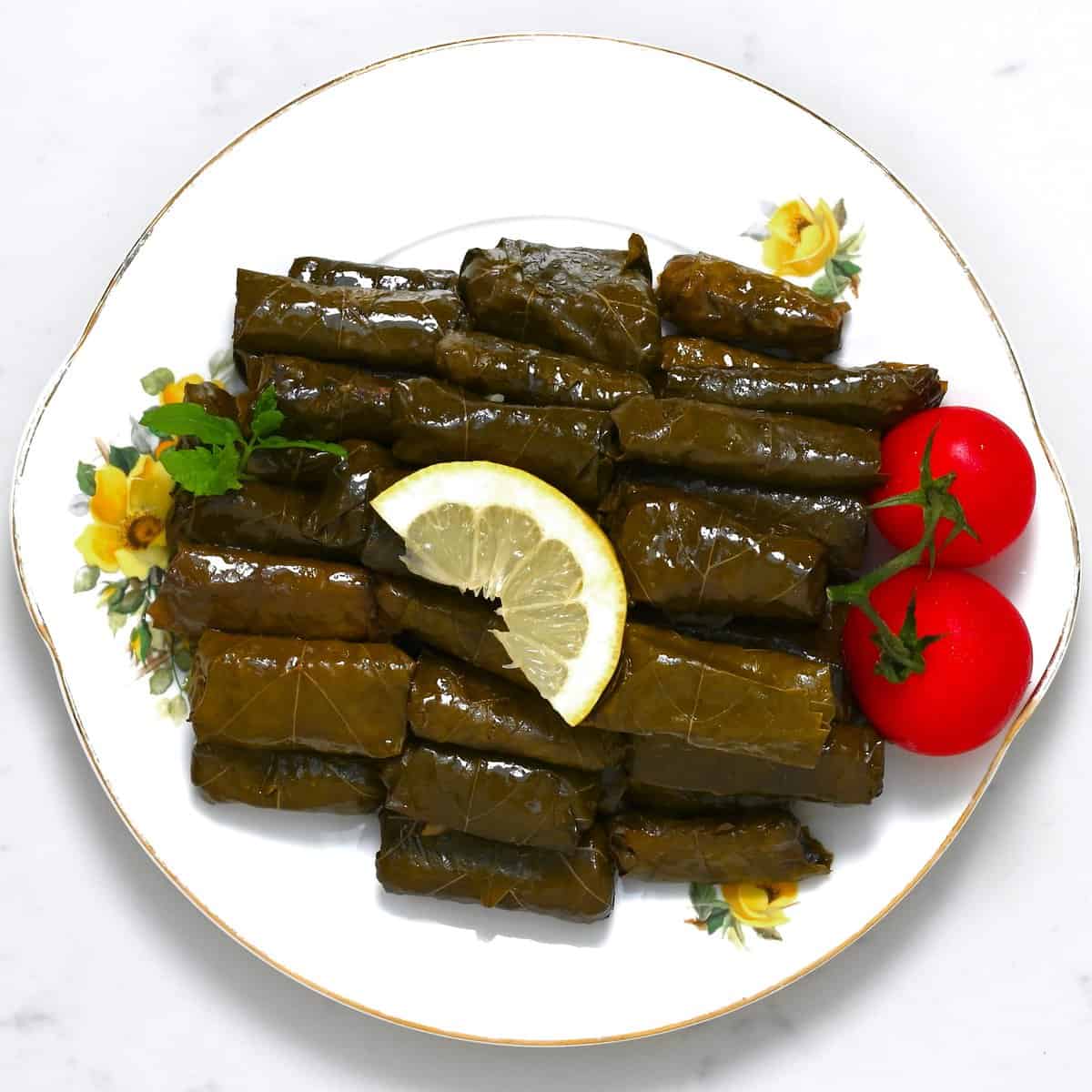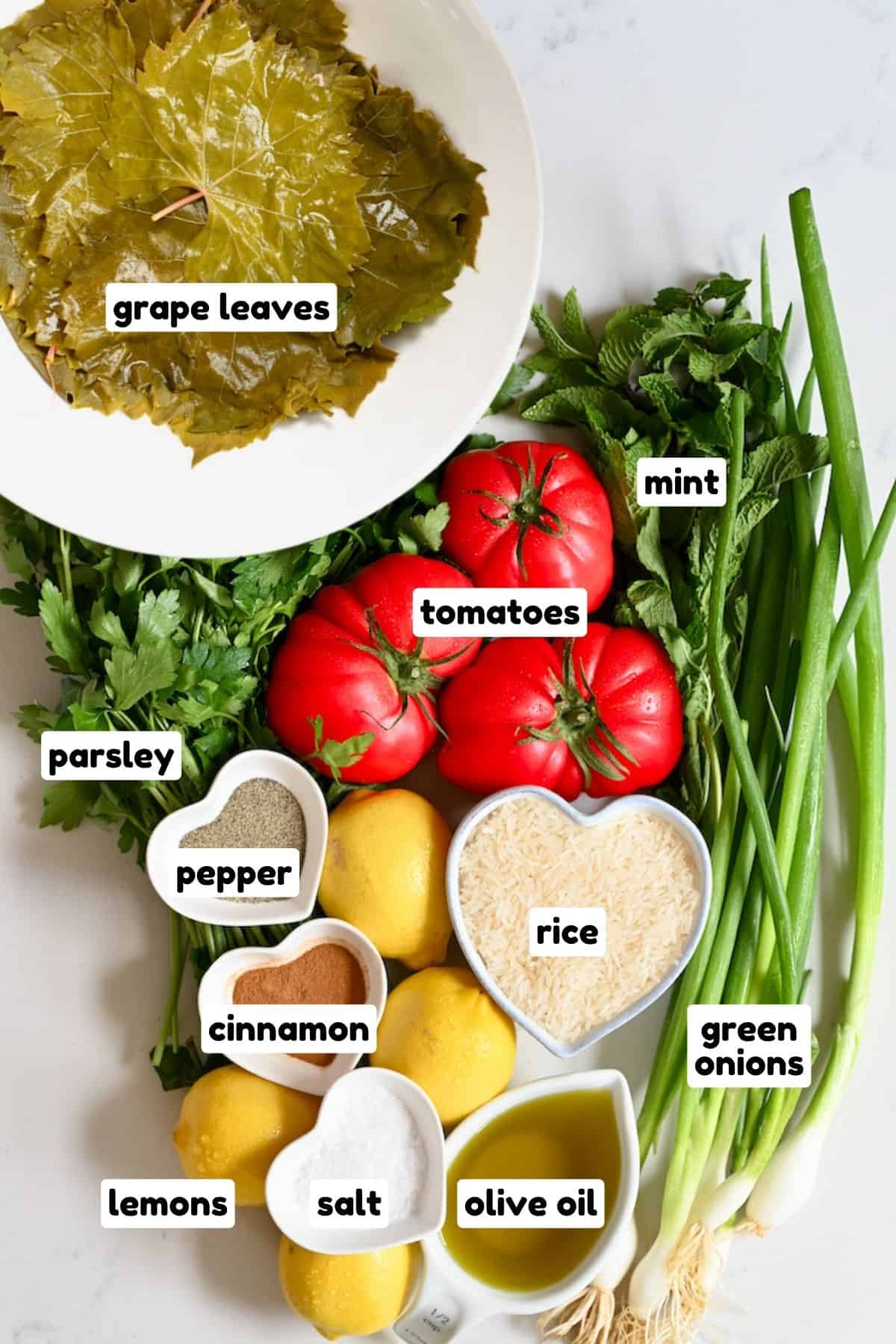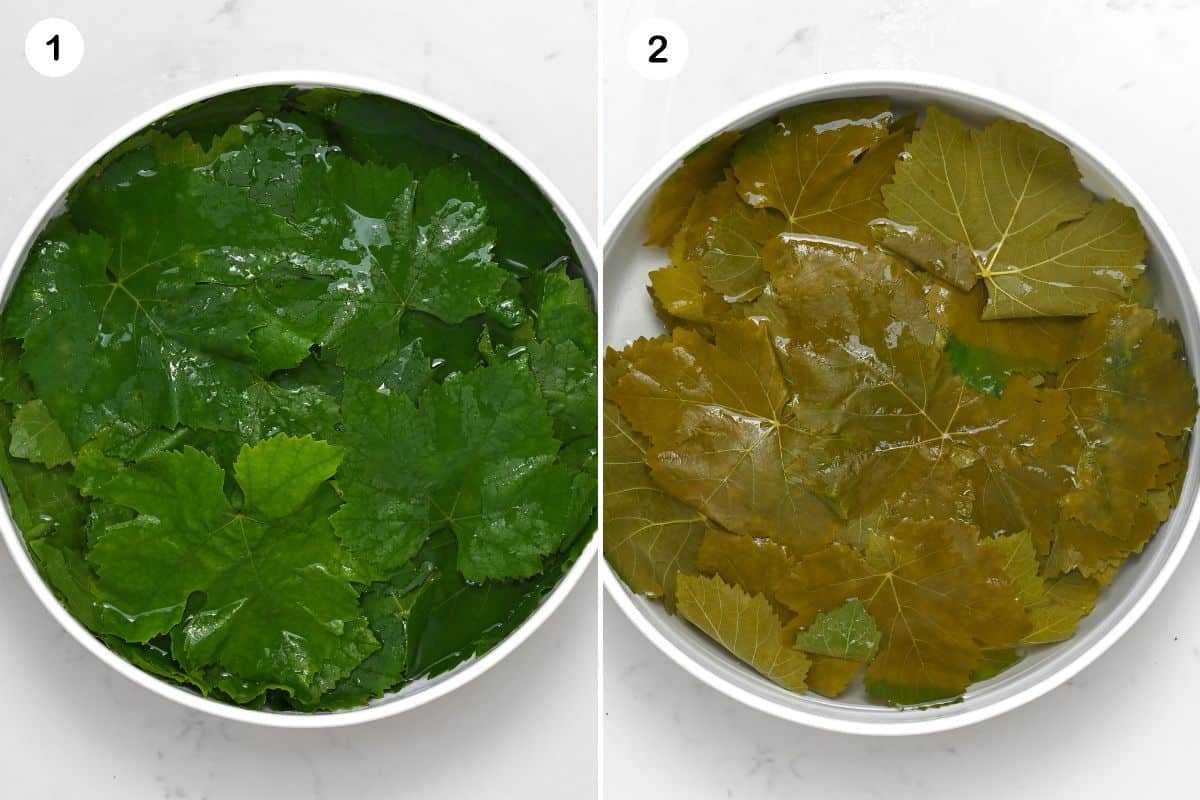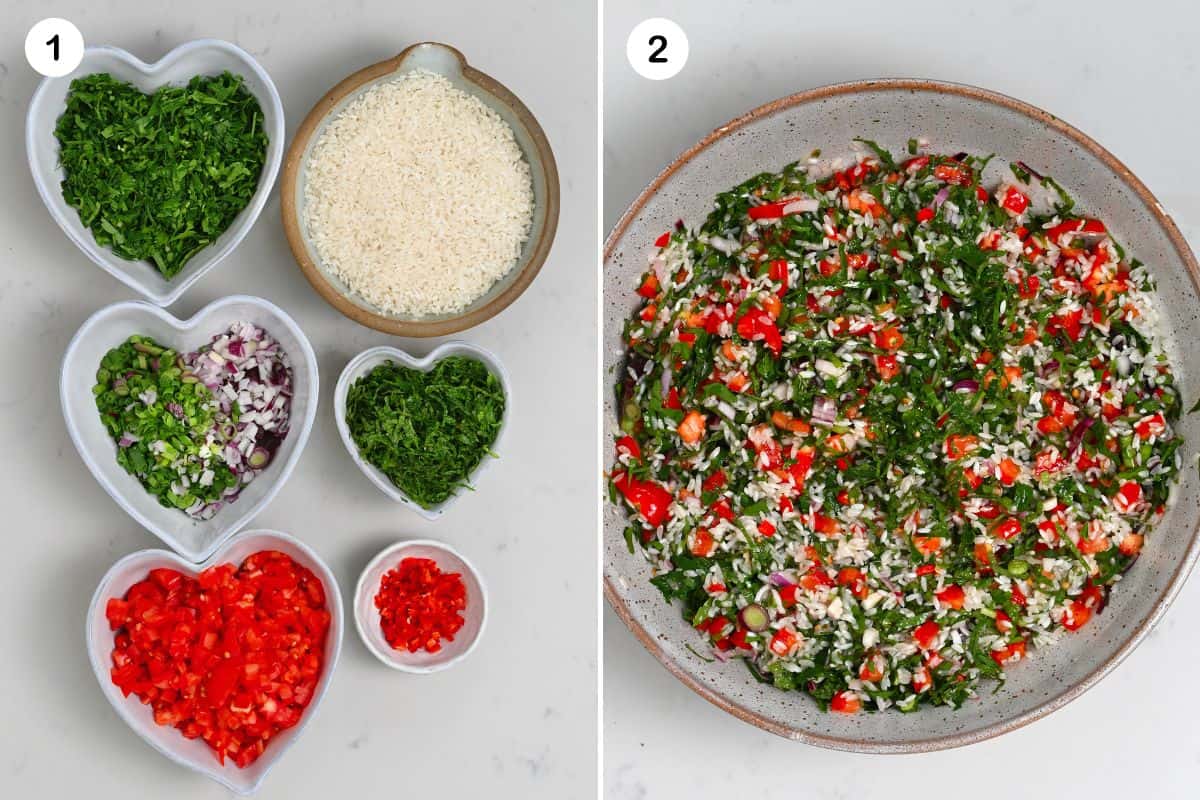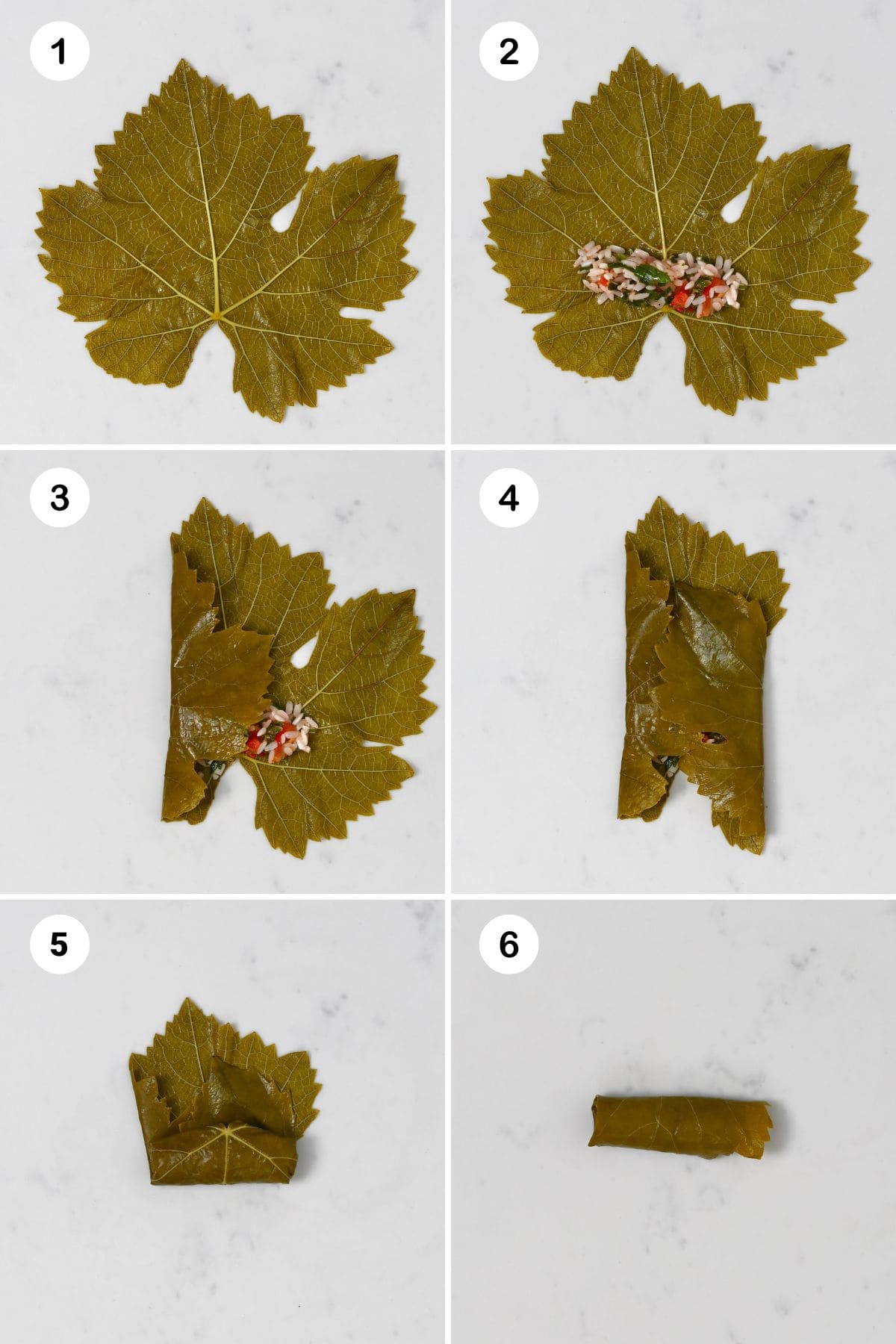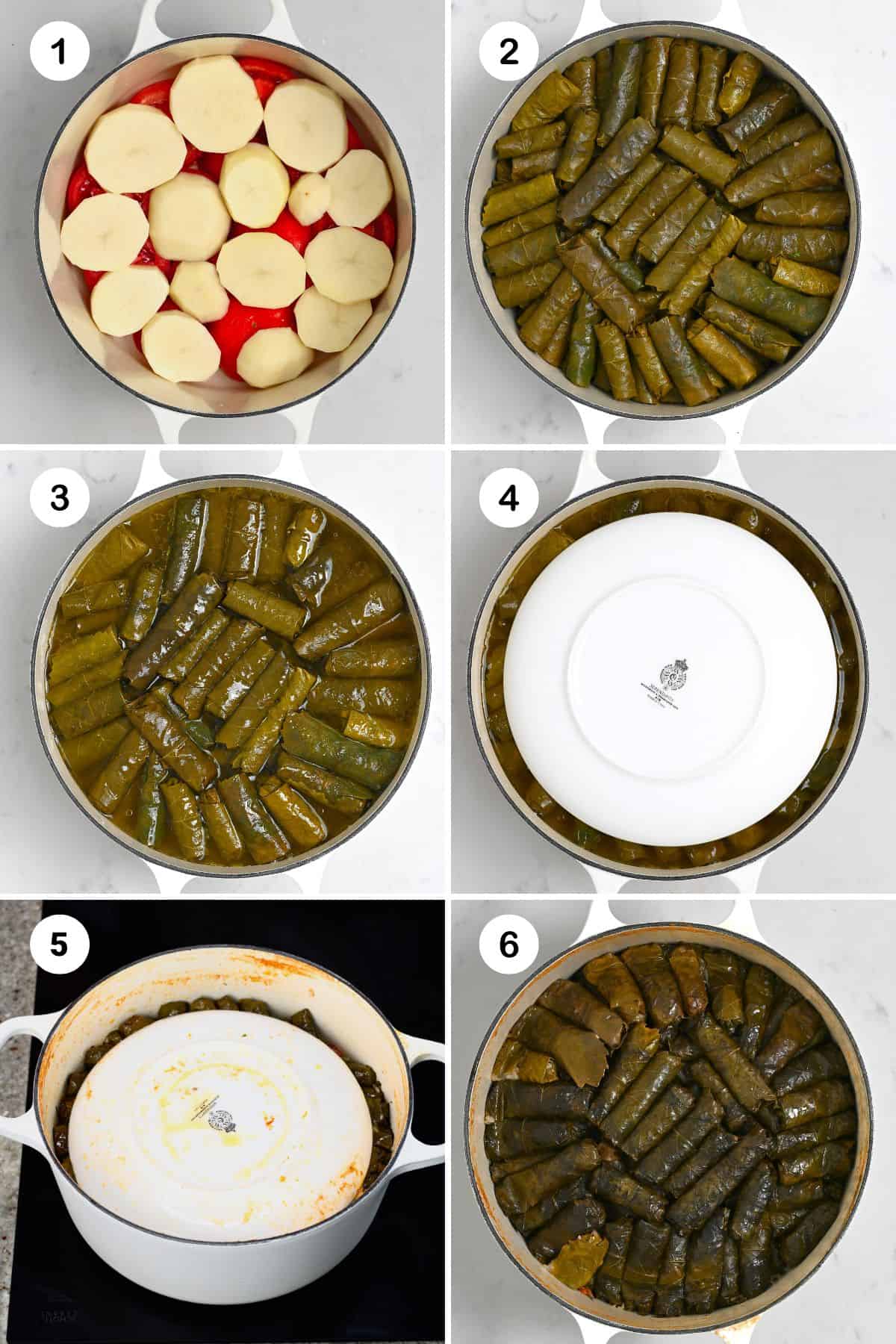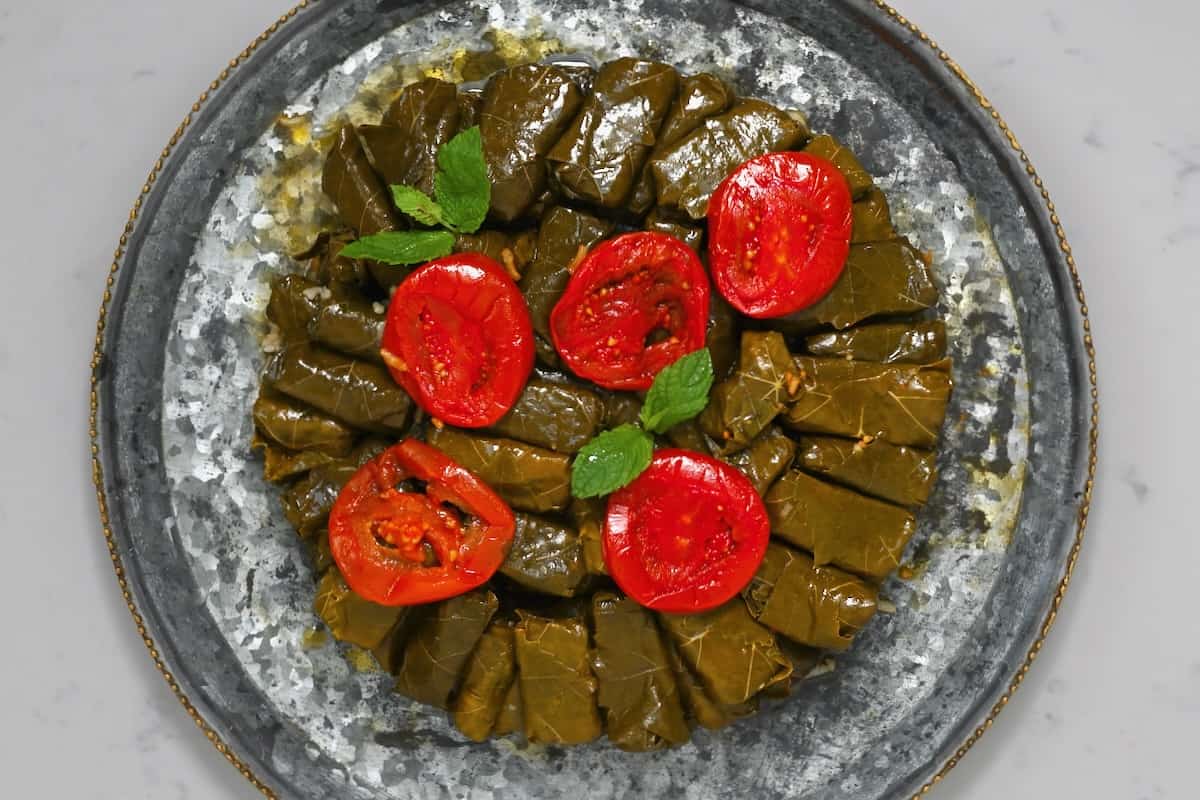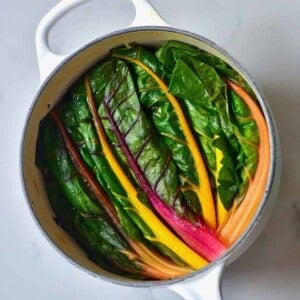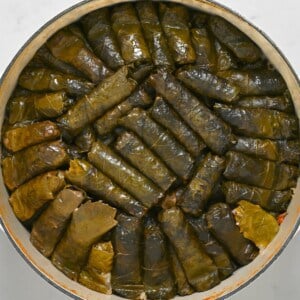I finally tried making my own stuffed grape leaves and it was way easier than I thought! I grew up watching my family spend ages making them and thought they’d be hard to do. But they’re pretty simple – just not a quick thing. You can make a big batch at once and freeze the leftovers for later. So, this one-time cooking can sort you out for weeks or even months. Plus, these grape leaves are a great snack, part of a bigger meal, or even a main dish, and they’re all vegetarian and filling too.
Recipe video tutorial
What are dolmas: stuffed grape leaves?
The term “dolma” comes from the Turkish word “dolmak,” which means “to fill” or refers to a “stuffed thing.” It describes a variety of stuffed dishes enjoyed across different cultures, from grape leaves to stuffed cabbage, stuffed bell peppers, or even stuffed tomatoes. Some dolmas contain meat, while others are vegetarian, all cooked in unique sauces. In Lebanon, we often refer to them as Warak Enab (vine grape leaves). As a Lebanese woman, I’ve grown up immersed in the tradition of making them. My favorite version is the vegetarian stuffed grape leaves. In this recipe, the grape leaves are filled with a hearty mix of rice, tomatoes, and loads of fresh herbs such as parsley, onion, and mint. We season them with olive oil, salt, and pepper. Then, they are slowly simmered in a vibrant lemon broth, wrapping up a recipe that’s not only delicious but also a piece of my family’s heritage.
How to make dolmas
Making these dolmas is quite straightforward, probably easier than you’d think, but you’ll need a bit of patience. The whole process involves four main steps: getting the grape leaves ready, making the stuffing, rolling the dolmas, and then cooking them. Step 1: Prepare the Grape Leaves For this recipe, you can use either fresh or preserved grape leaves. If using preserved, simply rinse and drain them; they are ready to use. For fresh leaves, wash and blanch them in boiling water for 2-3 minutes until they soften and turn a lighter, olive-green color, then let them cool in a colander. Step 2: Prepare the Stuffing Rinse the rice thoroughly until the water runs clear, typically after 3-4 rinses, to remove excess starch and prevent it from becoming gummy. Then, allow it to drain. Finely chop the tomatoes, mint, parsley, onion, and, if you like a bit of heat, red pepper. Place them in a large bowl. Then, add the rice, season with salt and pepper, and drizzle ¼ cup of olive oil over it. Mix everything thoroughly. Step 3: Stuff and Roll the Grape Leaves Start by preparing your cooking pot to arrange the stuffed grape leaves directly as you go. Lightly oil the pot, then arrange a layer of tomato slices topped with potato slices at the bottom to prevent the grape leaves from burning on the bottom of the pot. Then, remove any large stems from the grape leaves. Place each leaf with the shiny side facing down on a clean surface. Spoon one teaspoon of the stuffing in the middle and near where the stem was, being careful not to overfill since the rice expands when cooked. Fold in the sides, then roll up the leaf, tucking in the left and right sides as you go, similar to rolling a spring roll. Roll tightly, while still allowing space for the rice to expand as it cooks (watch my video to see how I did it). If you can manage to get your family in on the task, then it’ll go by quickly. And it only takes a few leaves to build your method and get in the groove. Step 4: Assemble and Cook Arrange the stuffed grape leaves in the pot, seam side down, packing them tightly to prevent unraveling during cooking. In a bowl or jug, mix water, lemon juice, and the remaining olive oil, then pour this mixture over the stuffed grape leaves to partially cover them. Place an inverted plate or pan on top of the grape leaves in the pot and put something heavy on the plate. Then, cook them on medium heat for 30 minutes until they absorb most of the liquid. After that, remove the plate, cover the pot again, and continue cooking on low heat for another 30 minutes or until fully cooked. Once cooked, remove the pot from the heat. Let the grape leaves ‘rest’ uncovered for 20-30 minutes before transferring them to a serving plate.
Serving suggestions
Stuffed grape leaves are super versatile. You can enjoy them as snacks or main meals. Often, Lebanese restaurants include them on mezze platters with various other delicious dishes:
Spinach Fatayer (Lebanese spinach pies) Lebanese Spicy Potatoes Batata Harra Tabouli Salad Baba Ganoush Dip and Hummus
If you try this dolmas recipe, let me know how it goes in the comments below. I’d appreciate a recipe card rating and would love to see your recipe recreations – tag me on Instagram @Alphafoodie!
